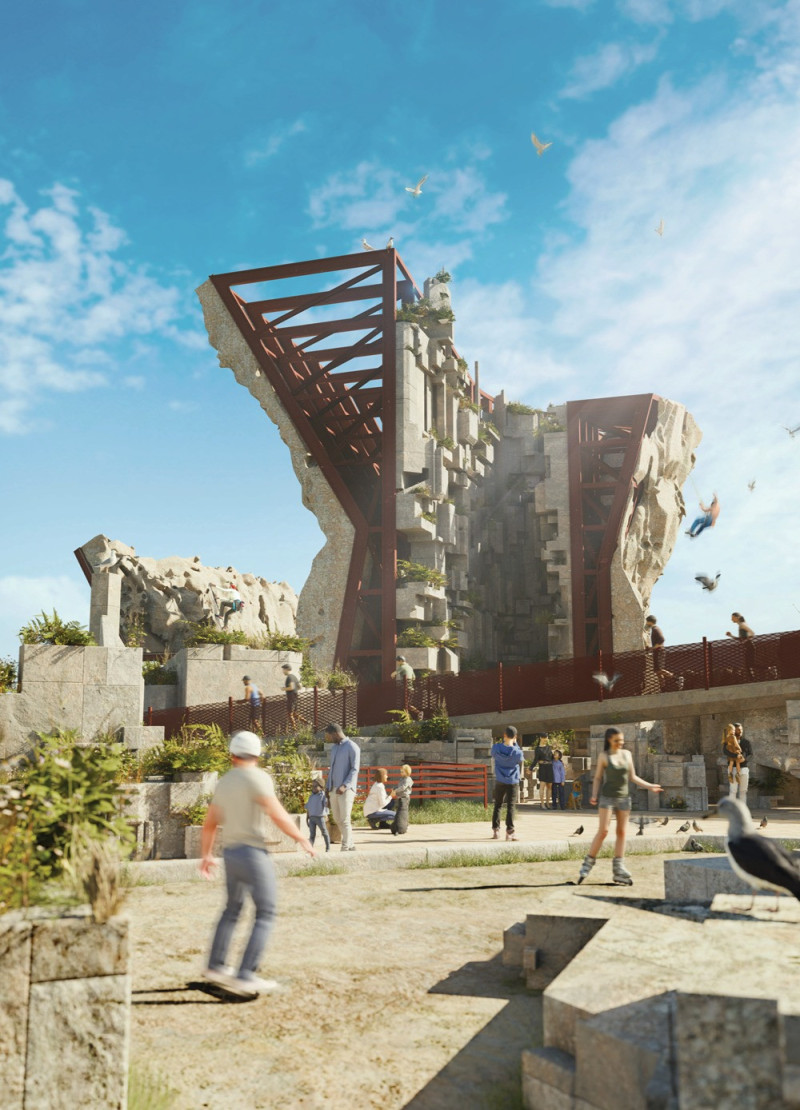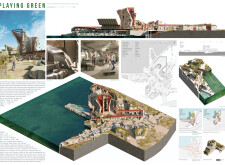5 key facts about this project
## Project Overview
Located in Tokyo, Japan, the Memorial Urban Sports Park aims to celebrate the legacy of the 2020 Tokyo Olympics while enhancing urban life through sustainable architectural practices. This multifunctional space is designed to support community interaction and promote both physical and mental well-being through a variety of sports and leisure activities. The initiative emphasizes the integration of nature and urban settings, responding to the need for engaging public spaces in the aftermath of the Olympic event.
## Spatial Strategy and Community Engagement
The design promotes a harmonious coexistence between nature and urban activity, addressing urban heat challenges by incorporating green spaces and fostering biodiversity. The layout emphasizes participatory public areas, including outdoor sports facilities, skate parks, and communal gathering spaces, which encourage diverse forms of engagement. A network of pathways guides users through the site, enhancing accessibility and promoting exploration while encouraging physical activity.
## Material Selection and Construction Methodologies
The project employs a range of materials selected for their functional, aesthetic, and ecological benefits. Concrete provides structural integrity and durability, while steel introduces a dynamic contrast, facilitating open spaces through agile structural designs. Glass enhances natural lighting and connects indoor and outdoor environments, and timber adds warmth and tactile qualities. Green roof systems and vegetation are integral for promoting biodiversity, natural insulation, and improved air quality.
Construction methodologies embrace prefabrication and modular design, allowing for efficient assembly and minimal disruption to the site. Additionally, adaptive reuse principles are applied to integrate existing structures, respecting the historical context of the area while reducing the ecological footprint through the use of recycled and locally sourced materials.


















































